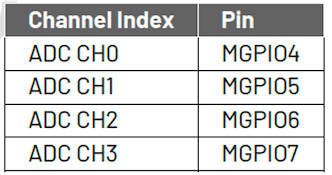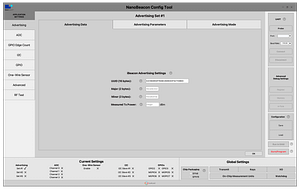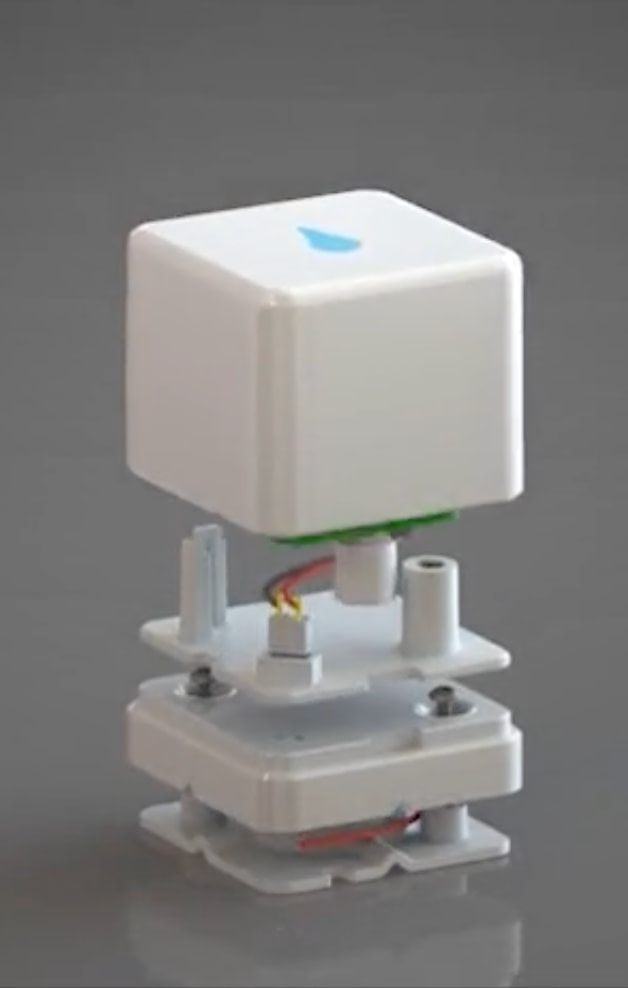This article is sponsored by InPlay, Inc. However, the opinions expressed by the author about the InPlay IN100 SoC are his own and were not influenced by the sponsor.
A few weeks ago, I published an article and video covering the world’s first programming-free Bluetooth beacon development platform. You can check out the abovementioned post here.
If you’re unfamiliar with InPlay and their latest NanoBeacon™ family of chipsets (including the IN100), it’s an innovative company focused on providing an easy-to-use, ultra-low cost, and ultra-low power solution for Active RFID and wireless sensor solutions. I also recommend you check out my Hackster.io project on getting started with the IN100:
The IN100 is the first of the NanoBeacon™ family of chipsets primarily focused on ultra-low cost and ultra-low power with a minimal physical footprint (as small as 2.5×2.5 mm). Other solutions in the market might focus on both low-power and low-cost. But, all of these other solutions require a high upfront investment cost: firmware development.
The IN100 requires no programming at all and minimal knowledge of the Bluetooth Low Energy protocol. This is achieved via a companion desktop application called the NanoBeacon™ Config Tool. This application now supports all major platforms: macOS, Linux, and Windows, and allows you to configure and flash your IN100 in a matter of minutes without writing a single line of code.
This is a significant breakthrough in the field of IoT development, whether that’s for industrial, commercial, or even consumer applications. Ideal target solutions include active RFID, asset tracking, and wireless sensors.
The challenge with the current IoT market
There are many problems with the current IoT market. This includes many obstacles that entrepreneurs, innovators, and especially hobbyists face when looking to add wireless connectivity to their products.
This applies to even the simplest applications, like a wireless sensor or a beacon tag!
Let’s discuss the different challenges and difficulties in the current IoT market, learn how the InPlay NanoBeacon™ SoCs help us overcome these challenges, and finally, go over some really cool projects that you can build with the InPlay IN100.
Here are the three prominent challenges in the IoT market today:
- Complexity and barrier of entry: Wireless technology can be daunting to a newcomer or a non-technical person. Most people don’t know where to start when adding wireless connectivity to their products.
- Cost: Firmware development is very expensive 💰 and adding wireless technology to a product increases its BOM cost in a non-insignificant way
- Time: The length of time to design a wireless connected product is long
Wouldn’t it be nice if there was a solution to all these problems? Well, I’m here to tell you that there is!
How the InPlay IN100 solves today’s IoT market challenges
InPlay’s unique NanoBeacon family of SoCs was designed from the ground up to address each and every one of these challenges.
How does it address them, you ask? Let’s take a look!
- Complexity and barrier of entry: Innovators coming from the sensors world or RFID field may not know where to start and how to add wireless connectivity to their products. They might be afraid of the unknowns and the complexities associated with wireless protocols (from BLE to WiFi to ZigBee, you name it!).
With the InPlay IN100, a Bluetooth Low Energy chipset and the first of the NanoBeacon family, you don’t need to know much about BLE or even wireless technologies in general. And the things you need to know are covered in video tutorials available on the InPlay website. This can help you get started with minimal to zero knowledge of BLE. - Cost: The IN100 was designed to be 100% programming-free. That means you can go from designing your product to shipping it to customers without writing a single line of code and without spending thousands of dollars $$ on firmware development. The IN100 was also designed to be ultra-low cost. We’re talking under $1 for a fully packaged certified Bluetooth beacon tag (excluding external peripherals).
This makes the IN100 an ideal choice for cost-sensitive applications such as Active RFID and wireless sensor applications., - Time: The NanoBeacon™ Config Tool application allows you to configure and design your IN100-based application in hours! … instead of the weeks- and months-long process that comes with firmware development.
Seven practical IN100 projects
Here are seven cool projects that you can build today using the IN100. Each of these takes only hours or even minutes to configure and design using the NanoBeacon™ Config Tool.
1. Wireless Weather Station (I2C sensors)

Whether it’s temperature, humidity, air quality, or air pressure, nowadays, you can find a digital sensor for almost any sensing application you can think of.
With the IN100, you have many options when connecting peripherals. You can configure the device to advertise the values captured from multiple connected peripherals in a single advertising packet. It supports interfacing with both simple GPIO and I2C sensors.
Alternatively, you can configure it to act as if it’s three independent devices, each with its own: advertising packet containing readings from a specific GPIO-connected sensor, a different device name, and even a different Bluetooth address.
For example, you could include the temperature in one advertising set with the device name “Temperature,” the humidity in another advertising set with the device name “Humidity,” and air pressure in the final advertising set with the device name “Air Pressure.”
Examples of sensors you could incorporate into such as system include:
- Sensirion SHT40 (Temperature and Humidity) – I2C.
You could use a breakout board for easy integration and testing. One such example is Adafruit’s breakout board for this sensor. - Bosch BME680 (Temperature, Humidity, Pressure, and Gas) – I2C
You could use a breakout board for easy integration and testing. One such example is Adafruit’s breakout board for this sensor.
2. Plant Watering Monitoring System (Analog sensors)

In addition to digital input, the IN100 also supports interfacing with analog sensors via the built-in ADC. It features four ADC channels available on GPIO pins:

The internal ADC has 11 bits referenced by an internal 0.8 Volt bandgap reference. This means we have ADC values ranging from 0 – 2047, and the analog input signal range is from 0 – 2*ReferenceVoltage (up to 1.6 Volts).
If you’d like to get started with an example project for measuring soil moisture using an analog such as the DFRobot Soil Moisture sensor, then check out my recent Hackster.io project:
This is just a simple example project that you can use as a starting point to add your own sensors and peripherals and customize its advertising behavior and data.
3. Smoke Detector

Say that you want to build your own smoke detector to detect when smoke or even flammable gas is in the area and notify you when this occurs, then you can simply use a sensor such as the MQ-2 sensor from Winsen.
MQ2 Sensor from Sparkfun and its breakout board.

The sensor can be interfaced with using I2C, which is simple to do via the InPlay NanoBeacon™ Config Tool.
4. Key Finder (Bluetooth Beacon)

For simple applications such as item finding, one implementation would be to utilize an iBeacon or Eddystone advertising device (Bluetooth beacon). The InPlay IN100 not only supports Eddystone and iBeacon formats, but it can also be configured to advertise your own custom beacon/data format.




Once you have the IN100 configured with the chosen advertising data format, you could utilize the RSSI of the advertising packets to determine the proximity of the item the IN100 is attached to.
💡Tip: The IN100 also supports including Constant Tone Extension (CTE) data in the advertising data, part of the Direction Finding feature introduced in Bluetooth version 5.1. However, note that it is limited to using the Legacy Advertising data format, so your scanner will need to support parsing the CTE data in Legacy Advertising packets (vs. Extended Advertising packets).
5. Mailbox Delivery Notification System

Want to minimize your trips to the mailbox? Tired of not knowing when the mail was actually delivered?
With a simple sensor such as the STMicroelectronics LIS3DH attached to your mailbox cover, you can detect when the cover has been open/closed. For this project, you could utilize a breakout board such as this one from Adafruit:

The sensor supports an I2C interface, which the IN100 supports, so it would be a matter of simply interpreting the sensor data and detecting when the cover is in the open vs. closed state.
To understand how to work with the acceleration data, you can refer to ST’s App Note.
6. Water Leak Detector

Another really useful application that you can build with the IN100 is a water leak detector. A simple sensor like this one from Adafruit would do the job. It simply detects when water is present on the sensor and outputs a high signal.

We can connect it to one of the GPIOs on the IN100 and either include the GPIO status in the advertising data or, better yet, configure a triggered advertising set that only gets broadcast when the GPIO is high.
The IN100 has such low power consumption that one of its customers and partners, Aquasensing, has built a water leak detector device that is 100% battery-free!

7. Loud Noise Detector

Our final example of a project you can build using the IN100 is a loud noise detector. Whether that’s for detecting a glass-break noise, a loud siren, or even gunshots, you can use a sensor like the KY-37 sound detection module:

The sensor module has two output options, an analog and a digital output. And you can use either with the IN100 since it supports GPIO and has an internal ADC for reading analog signals.
Summary – InPlay IN100
As you can see, the sky is the limit with the applications you can build with the IN100! and best of all, you don’t need to write a single line of code!
To summarize, some of the pros of using the IN100 include:
- 100% Programming-free
- Ultra-low power – pairs well with energy-harvesting solutions
- Ultra-low cost – under $1 for a fully-packaged, certified beacon (no peripherals)
- Minimal footprint – 2.5 mm x 2.5 mm
- Supports long-range (Coded PHY) mode – using Legacy Advertising events
- Supports Direction Finding feature from Bluetooth 5.1 – using Legacy Advertising events
Do you have an interesting application you would like to build with the IN100? Would you like to see detailed instructions for building one of the projects we listed? Let me know by sending me a message here.







